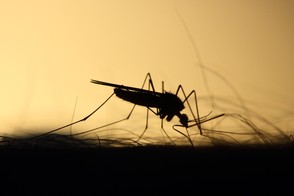
This year, Michigan, like several other states, has experienced high numbers of Eastern equine encephalitis (EEE) cases. Due to recent freezing temperatures, the arbovirus season in Michigan is believed to have ended for 2019. The most recent onset of signs of EEE in a confirmed case was on October 11, 2019. As of November 22, there have been 33 cases of EEE confirmed in domestic animals. This includes 29 cases in equine, two cases in canine, one case in a sheep, and one case in a goat from the following 14 counties:
- Allegan (1 equine)
- Barry (2 equine)
- Calhoun (1 equine and 2 canine)
- Cass (2 equine)
- Jackson (4 equine)
- Kalamazoo (6 equine and 1 goat)
- Kent (1 equine)
- Lapeer (1 equine)
- Leelanau (1 equine)
- Livingston (1 equine)
- Montcalm (1 equine)
- Newaygo (1 equine)
- St. Joseph (6 equine and 1 sheep)
- Tuscola (1 equine)
While EEE is most commonly found in southwest Michigan, in reviewing records dating back as far as 1971, cases of EEE have been confirmed in domestic animals in 39 different Michigan counties. It is not uncommon to confirm a few cases of EEE each year, however, cases tend to increase in years where there is a lot of rainfall and flooding early in the summer. Additionally, there has been a historical trend that high numbers of cases are seen about every 10 years. The last big outbreak of EEE was in 2009 when there were 56 confirmed cases of EEE in Michigan equine from 11 counties.
Horses and other equids are typically the animals most commonly seen with EEE; however, other species including dogs, deer, cattle, swine, sheep, goats, and camelids rarely get the disease. In 2012, Michigan had its first case of EEE confirmed in a neurologic eight-week-old puppy from Van Buren County. Cases in dogs tend to be seen in animals younger than six months of age. Dogs typically have neurologic signs and diarrhea and die shortly after becoming ill. This year is believed to be the first time EEE has been confirmed in a sheep and goat in Michigan; both animals had a sudden onset of neurologic signs.
Typically there are a few cases of West Nile virus (WNV) confirmed each year in Michigan. In 2017, Michigan experienced an outbreak of WNV resulting in 15 confirmed cases of the disease in Michigan equine from 14 different counties. To date, Michigan has confirmed one case of WNV in 2019 in a horse from Lapeer County.
MDARD has grant money for the remainder of 2019 and for 2020 to cover the testing costs for EEE and WNV for any suspect animal. If you suspect EEE or WNV in a Michigan animal, please contact the Michigan Department of Agriculture and Rural Development (MDARD) at 800-292-3939, prior to submitting the samples to participate in the grant. Testing is done through Michigan State University’s Veterinary Diagnostic Laboratory. When submitting samples, brain is the preferred sample, although serum and cerebral spinal fluid can also be tested. If veterinarians submit brain, the full animal or head can be submitted. If the full animal is submitted, the owner will have to pay for disposal of the body. As a reminder, suspect or confirmed cases of EEE and WNV in animals are required to be reported to MDARD. You may report a case by completing and submitting a Reporting a Reportable Animal Disease form to mireportableanimal@michigan.gov.
|